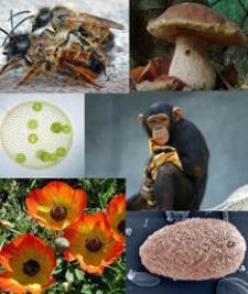Classification
Domain: Eukarya
Kingdom: Dinoflagellata
Phylum: Dinophyta
Class: Dinophyceae
Order: Gonyaulacales
Family: Goniodomataceae
Genus:
Alexandrium
Species:
Alexandrium tamarense
Domain: Eukarya
The Eukarya domain includes a wide variety of organisms such as protists, animals, plants, and fungi. Alexandrium tamarense belongs to this domain because it possesses membrane bound organelles, a plasma membrane, and contains a true nucleus.
Kingdom:
Dinoflagellata
This
kingdom contains organisms that vary from being parasitic to
mutualistic. Organisms that belong to this kingdom tend to
exhibit these general characteristics: two flagella (used
for locomotion or acquisition of food particles),
unicellular, contain cellulose plates under their membrane,
and are primary producers in marine environments.
Phylum:
Dinophyta
This
phylum consists predominantly of “flagellate unicellular
marine organisms, often dark brown in colour due to the
presence of the xanthophyll pigment peridinin”(Dictionary
of Botany. 2003). This phylum can be divided into two
classes, the Desmophyceae and the Dinophyceae.
Class:
Dinophyceae
This
class is specified to have organisms that exhibit a motile
stage in their life in which they have two rear dissimilar
flagella.
Order:
Gonyaulacales
This
order includes “cells with a
series of cellulose plates organized in a regular pattern” (Balech,
1995).
Family:
Gonyaulacaceae
In this family a sulcus is formed on the organism and is more or less midventral (Bio*Pedia, 2008). A sulcus is a groove that forms on the organism. The formation of this groove helps us be able to see all of the cellulose plates under the membrane of the organism.
Genus:
Alexandrium
Alexandrium
is genus that contains the largest number of toxic species
in the Dinoflagellates.
Species:
Alexandrium tamarense
This
species of Alexandrium is often confused with other species
within its genus but because of the size and shape of
Alexandrium tamarense
it is distinguishable. This species is a microscopic
organism, the size and shape of
Alexandrium tamarense
is highly variable: cells range in size between 22-51 Ám in
length and 17-44 Ám.

Phylogenetic Tree. Modified from Campbell et.
al.
Lindsay Hoessel 2013

Modified From:
Lindsay Hoessel 2013
The tree depicted above shows the relationship between Alexandrium tamarense and its closest relatives, A. affine, A. tamiyavanichi, A. fundyense, A. catenella. This direct linkage between all four of these species can show us other species of Alexandrium that are also toxic. This phylogenetic tree was derived from a experiment done by Leblond et. al in which they did rDNA sequencing to determine the exact ancestry of each species.
Alexandrium tamarense is
also referred to as Alexandrium. It is usually referred back
to its genus because there are so many species of
Alexandrium that have the same relative affect of the
environment. Even though the different
species of Alexandrium can be separated through ribosomal
DNA sequencing as explained above, they all are still
contributors to PSP and
Red Tide! This is why all
species of Alexandrium tamarense and all of its
closest relatives are commonly referred to as Alexandrium.
Next Stop: Habitat!
